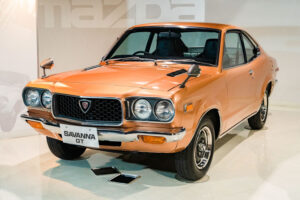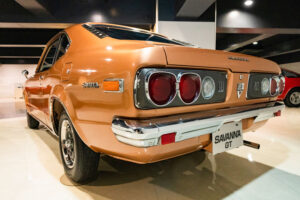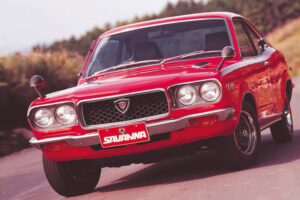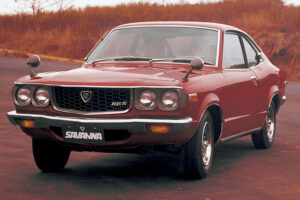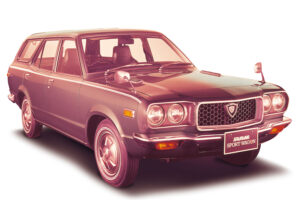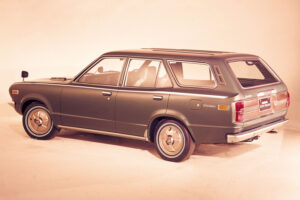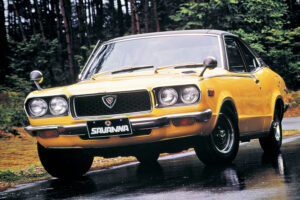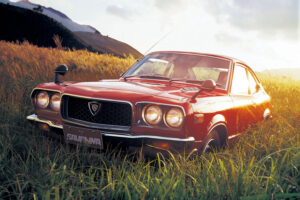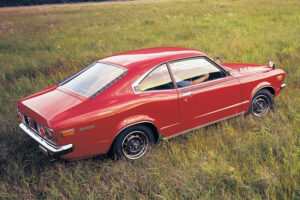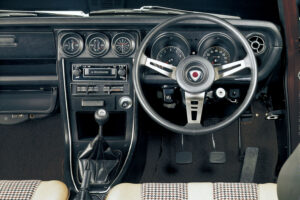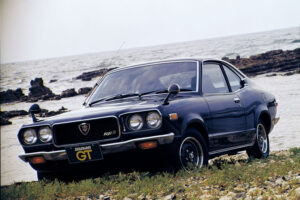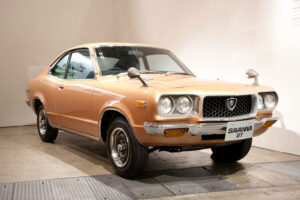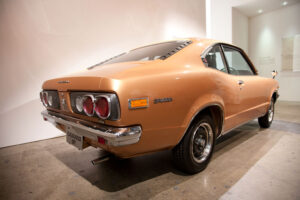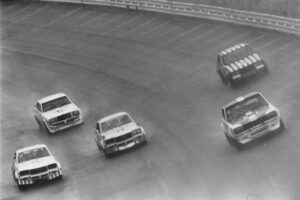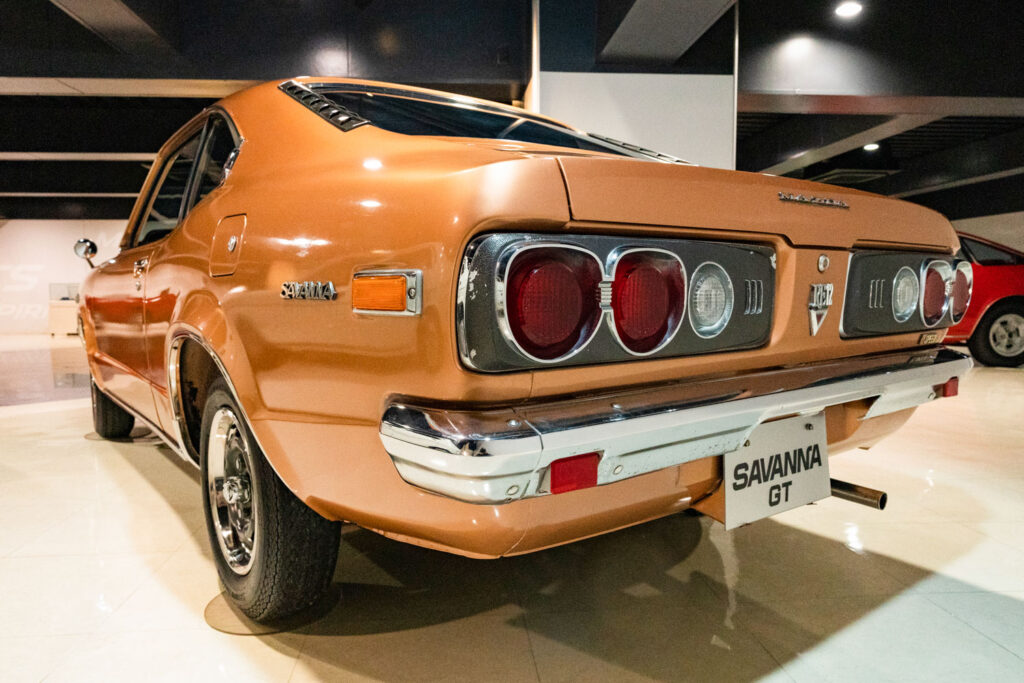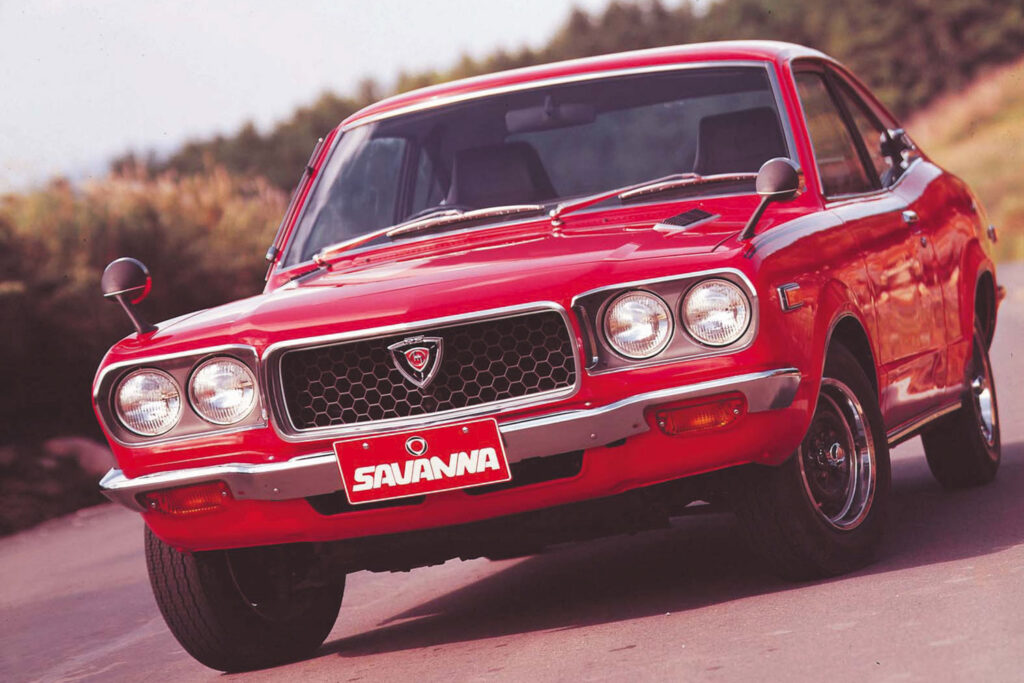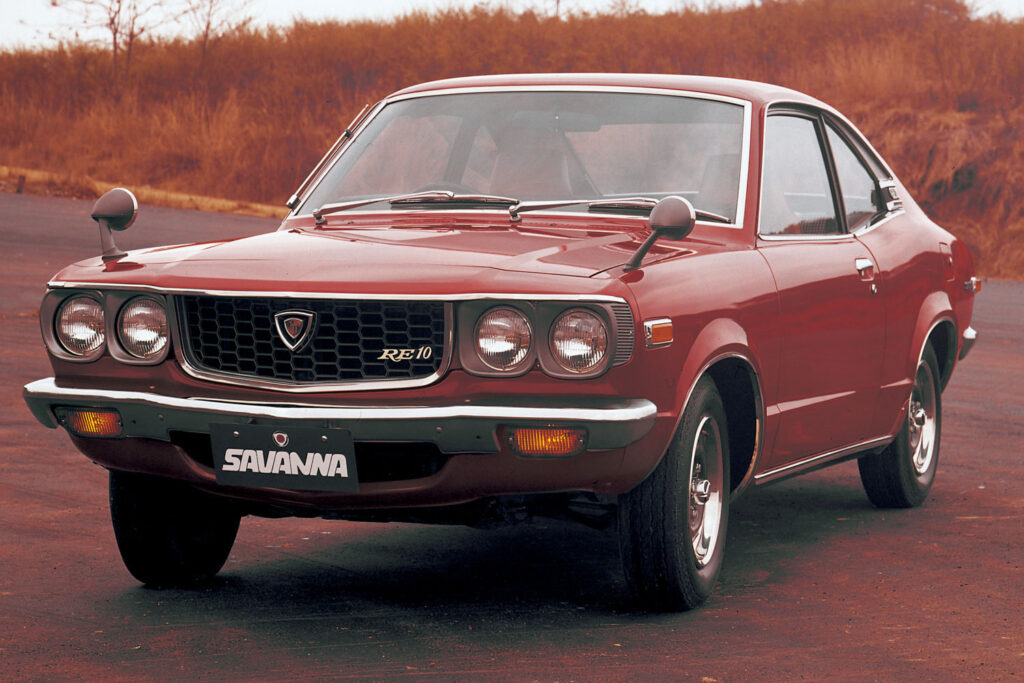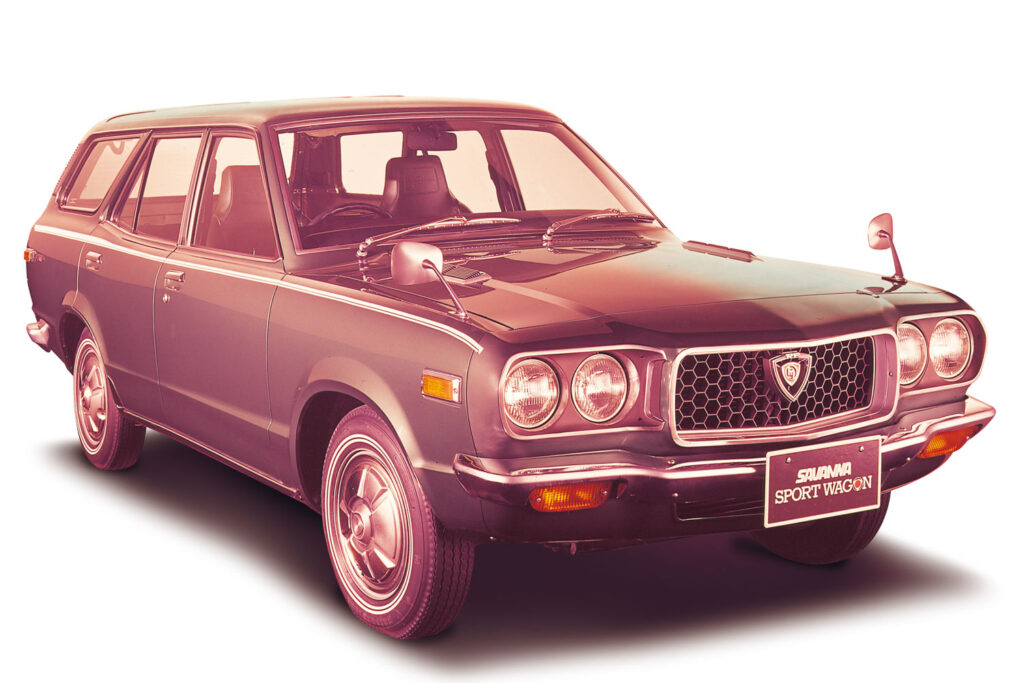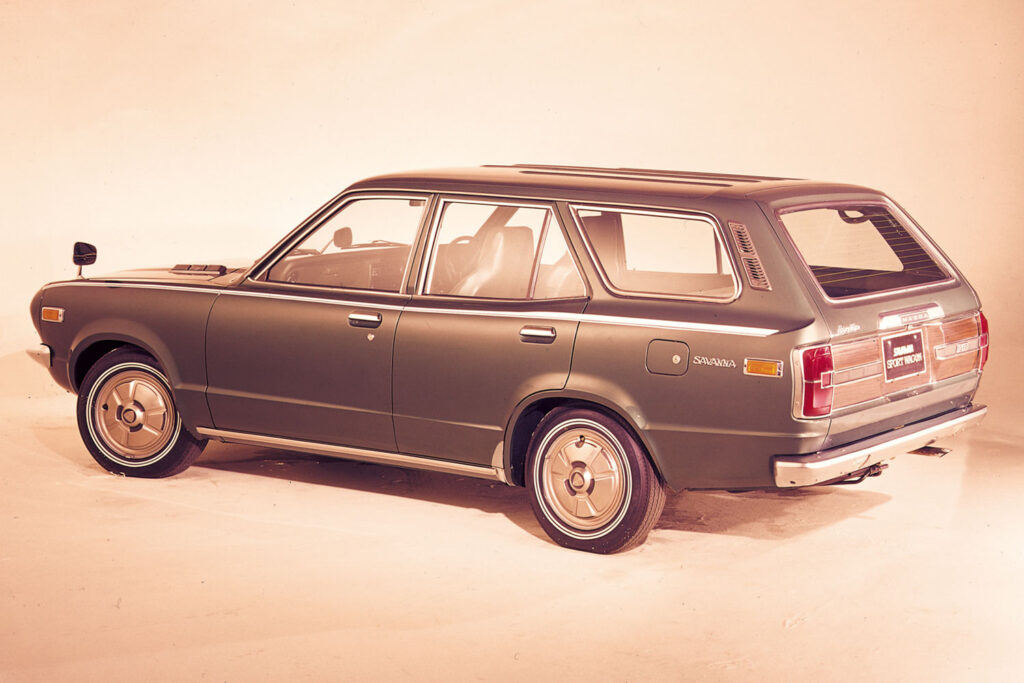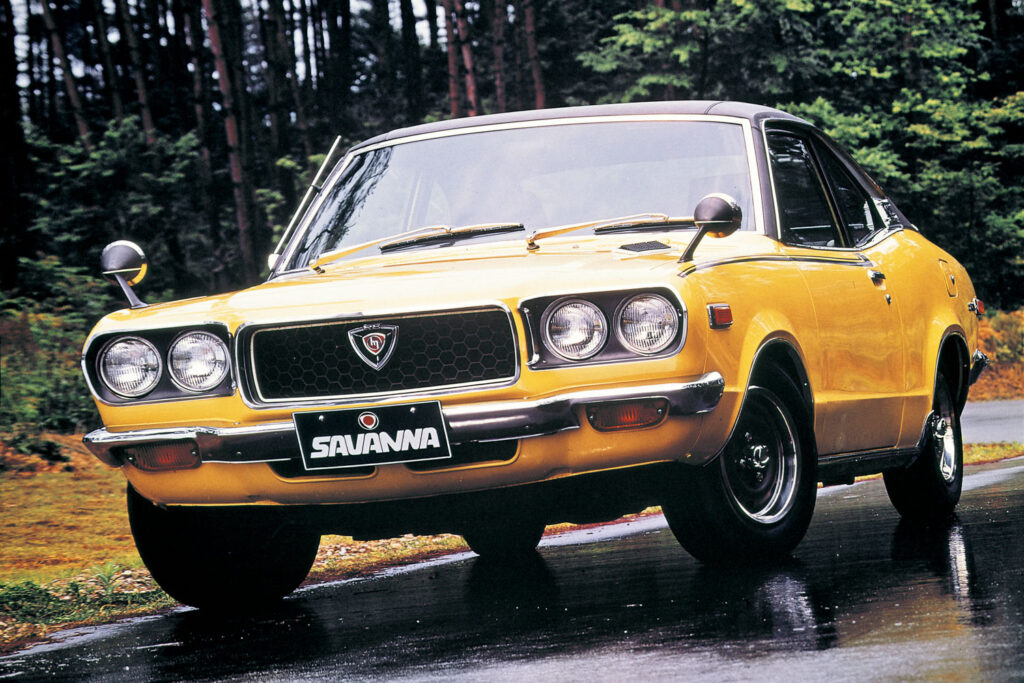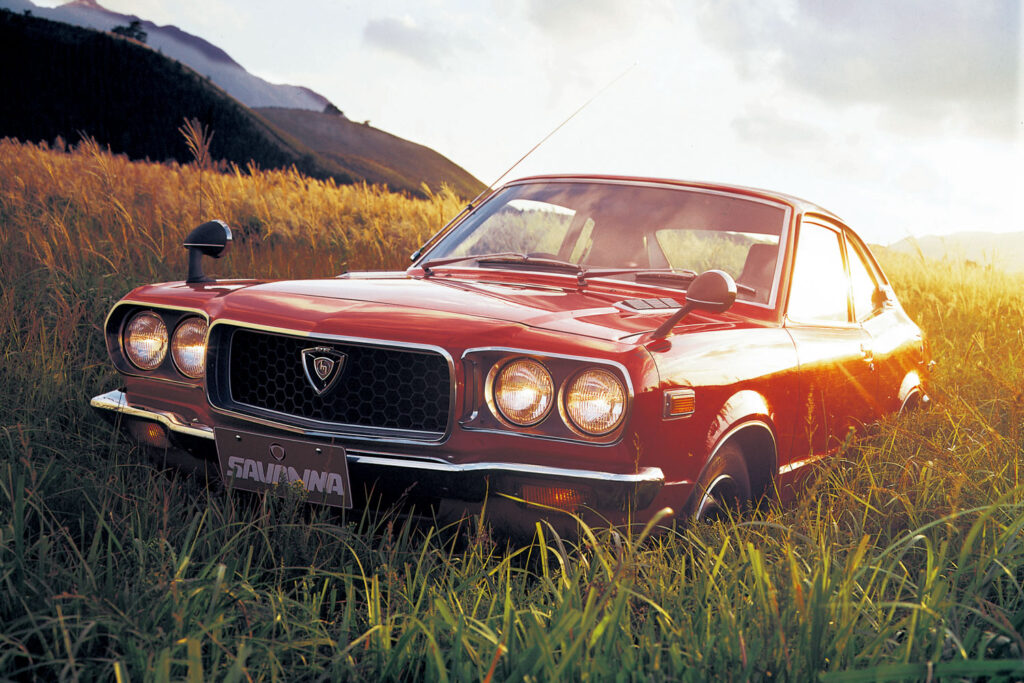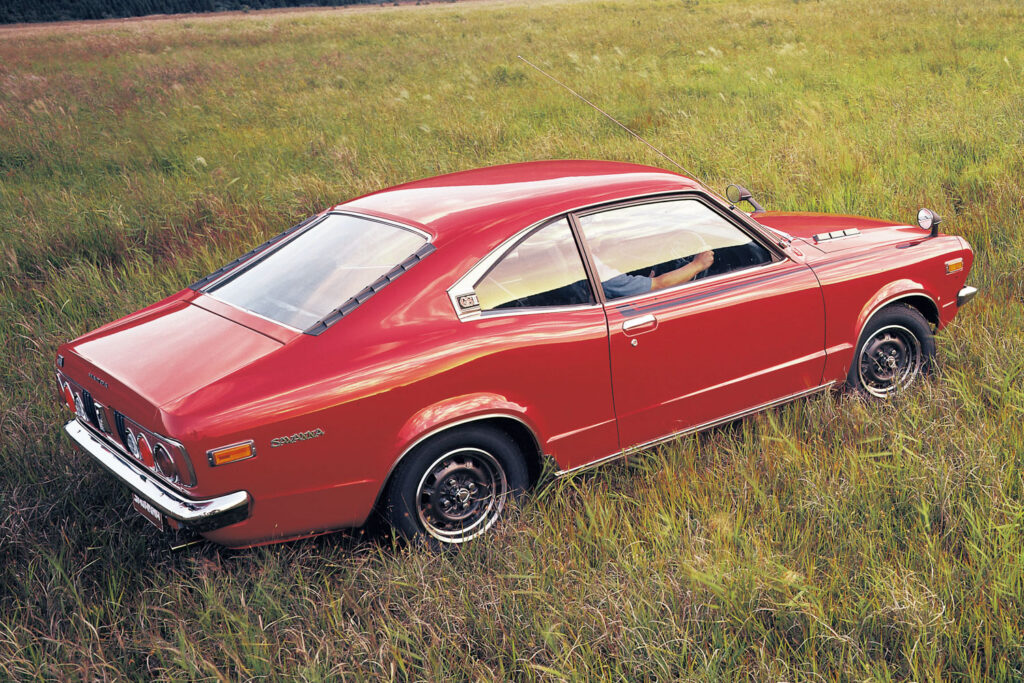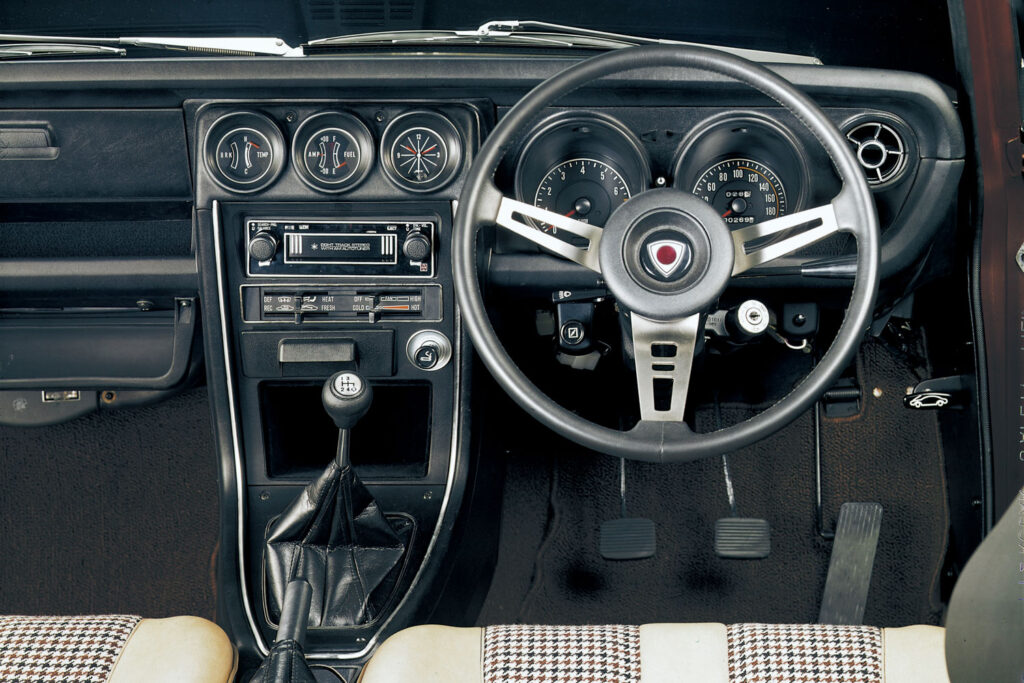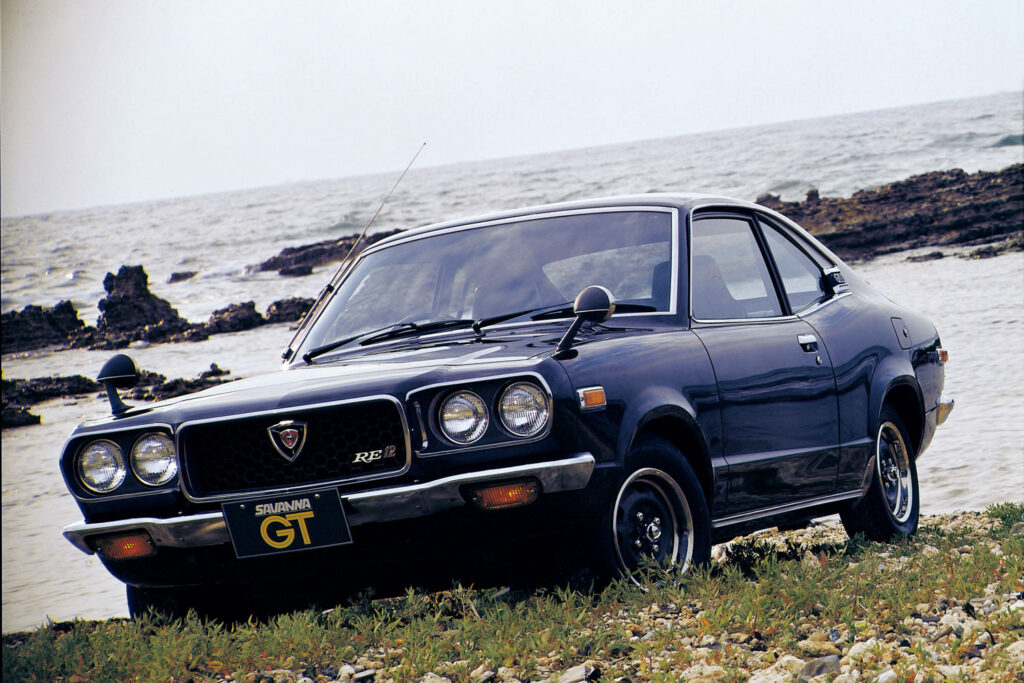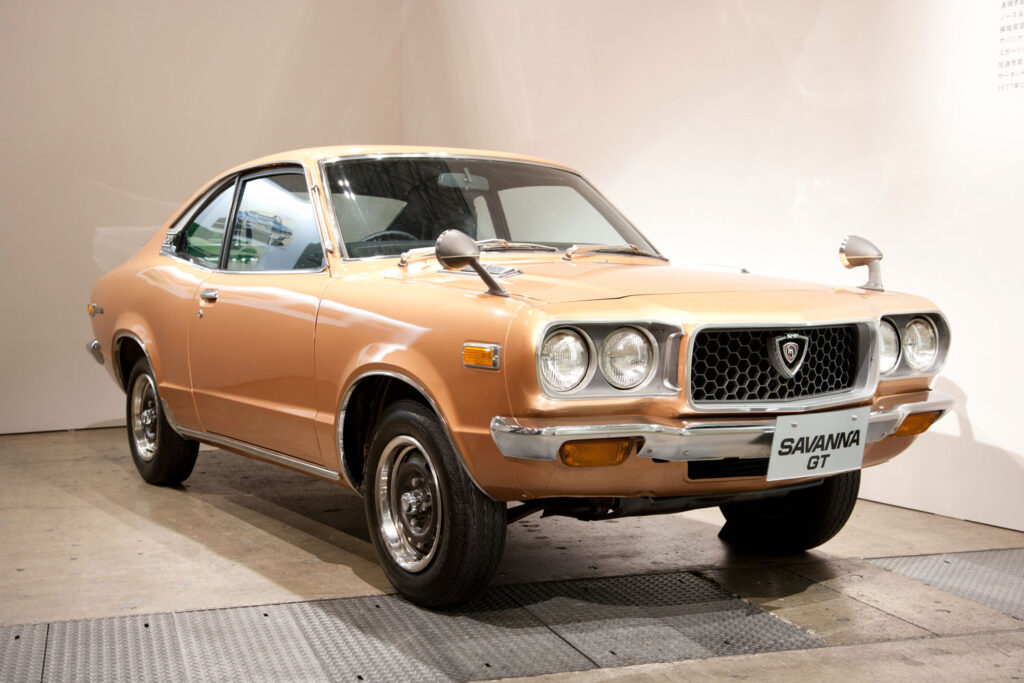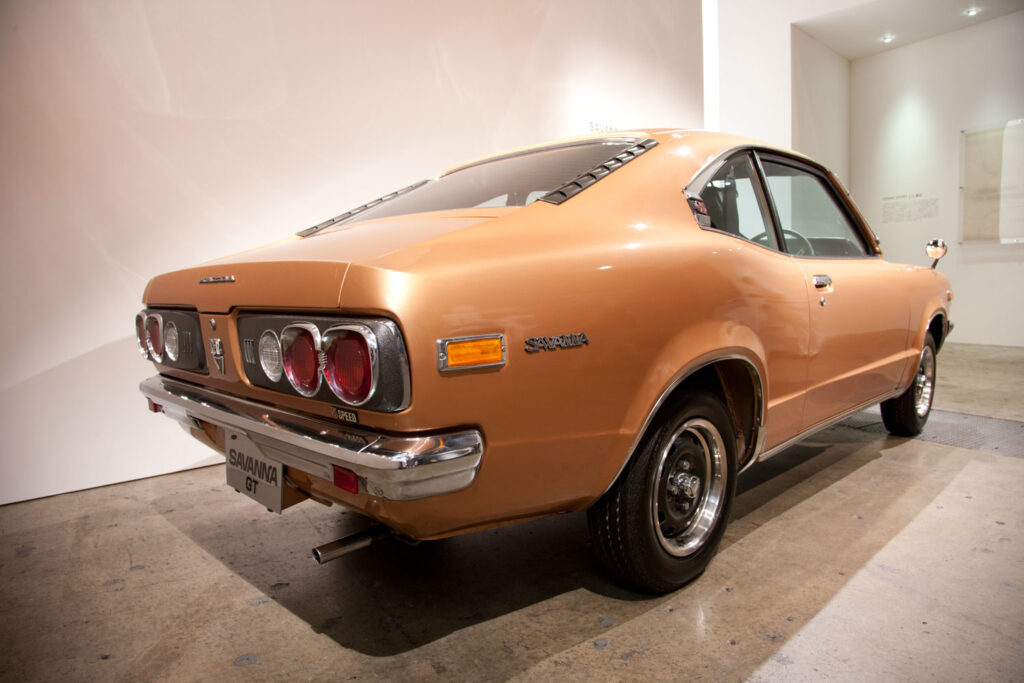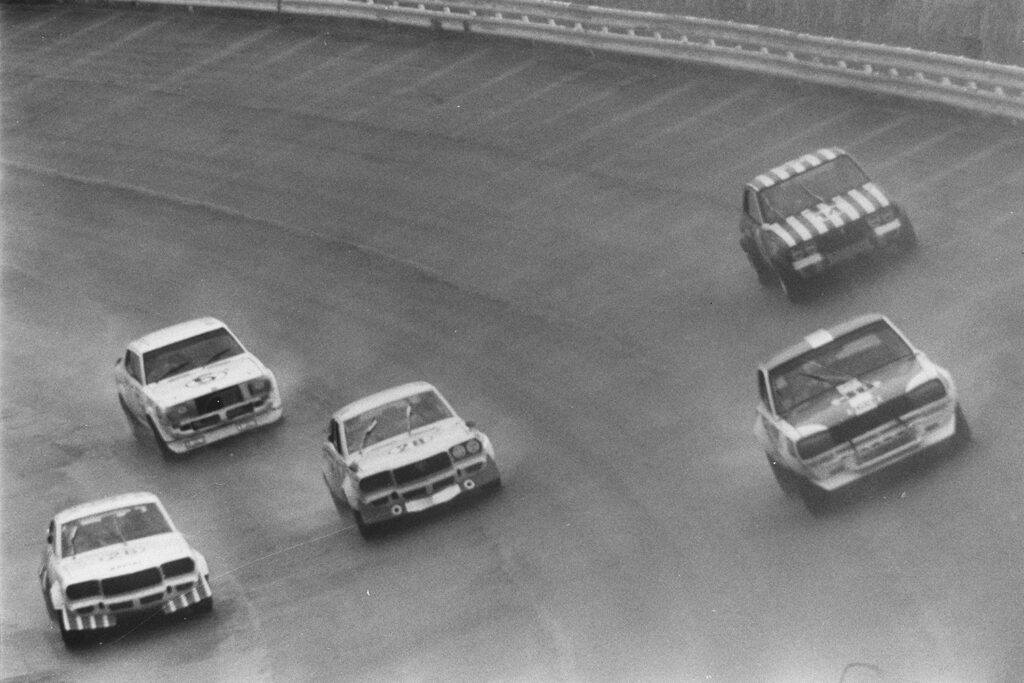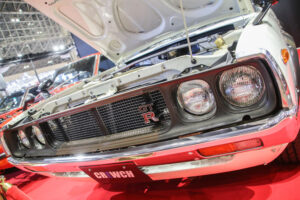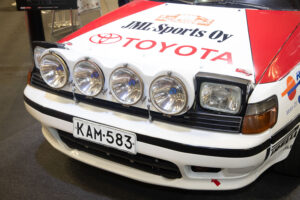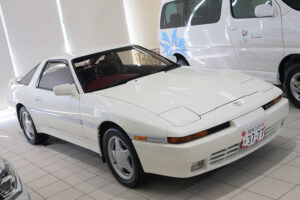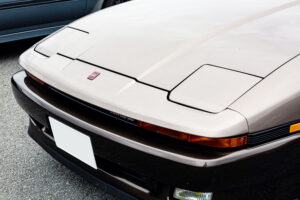It was popular because of its low price for a new car and high performance.
Mazda introduced its first rotary-engine car, the Cosmo Sport, in 1967. The rotary engine, known as the Wankel type, burns gasoline using a triangular rotor rotating inside a cocoon-shaped casing and was first adopted by Germany’s NSU (later Audi), which marketed a rotary engine car. However, the technical problems were difficult to solve. Then Mazda came along and patented the engine, paving the way for mass production.
Savanna stopped the winning streak of the Nissan Skyline GT-R
The Cosmo Sport was a two-seater sports car, but the Familia Rotary Coupe was introduced next to increase sales. Mazda was active in racing, both with the Cosmo Sport and the Rotary Coupe. They were also refining their technology and communicating the appeal of the rotary engine to the rest of the world.
A rotary coupe was added to the Familia’s high-end model, the Luce, followed by the Capella. The RX-3 was an export name, and in Japan, it was simply called the Savanna. This led to the Savanna RX-7.
The Savanna RX-3 made its name when it stopped the Nissan Skyline GT-R, which at the time was on a breakneck race-winning streak. Mazda had previously challenged the GT-R with the Familia rotary coupe but was unable to win. Then they introduced the Savanna with a vengeance. Compared to the engine inherited from the Cosmo Sport era, the Savanna’s larger displacement and higher horsepower helped prevent the GT-R from winning again.
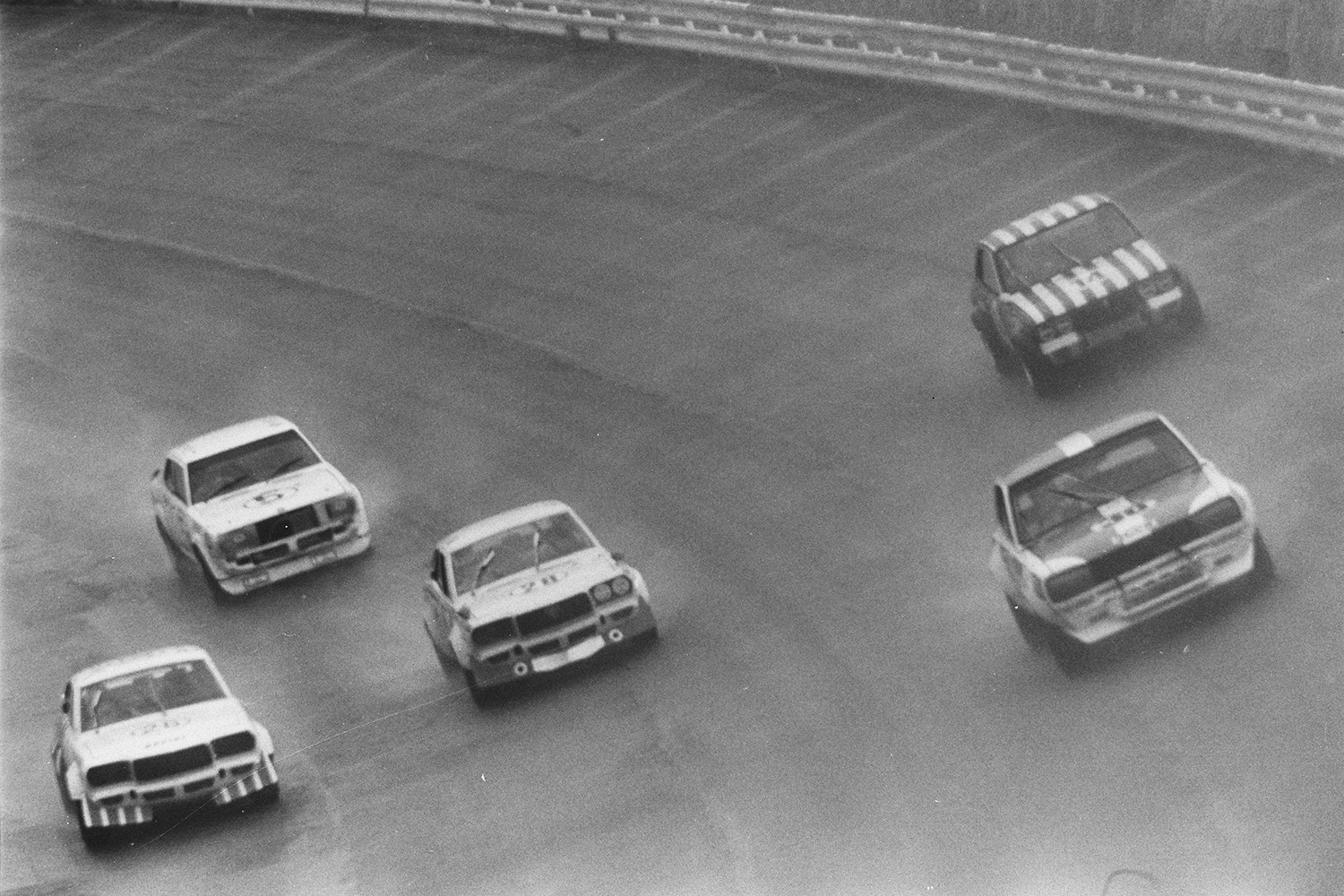
In addition, the Savanna was faster than the Capella due to its lightweight and nimble performance, even for a production car. Not only the engine performance but also the improved chassis performance contributed to the victory.
Savanna’s lightweight body made it feel nimble
When I was in college, I was allowed to drive my classmate’s Savanna, which was lighter and nimbler than the 2000GT. The rotary engine lacked the instantaneous force of a piston engine, but it revved smoothly, increasing power and speed. The Skyline and Savanna had completely different personalities, but I felt that they competed in the race by taking advantage of their strengths.
The Savanna RX-3, born in 1971, also showed that rotary engines could cope with the emissions regulations that threatened the world in 1970. At the time, other automakers were eager to learn from the rotary engine. The rotary engine was a dream come true for the next generation because it could meet emissions regulations and still deliver high performance.






